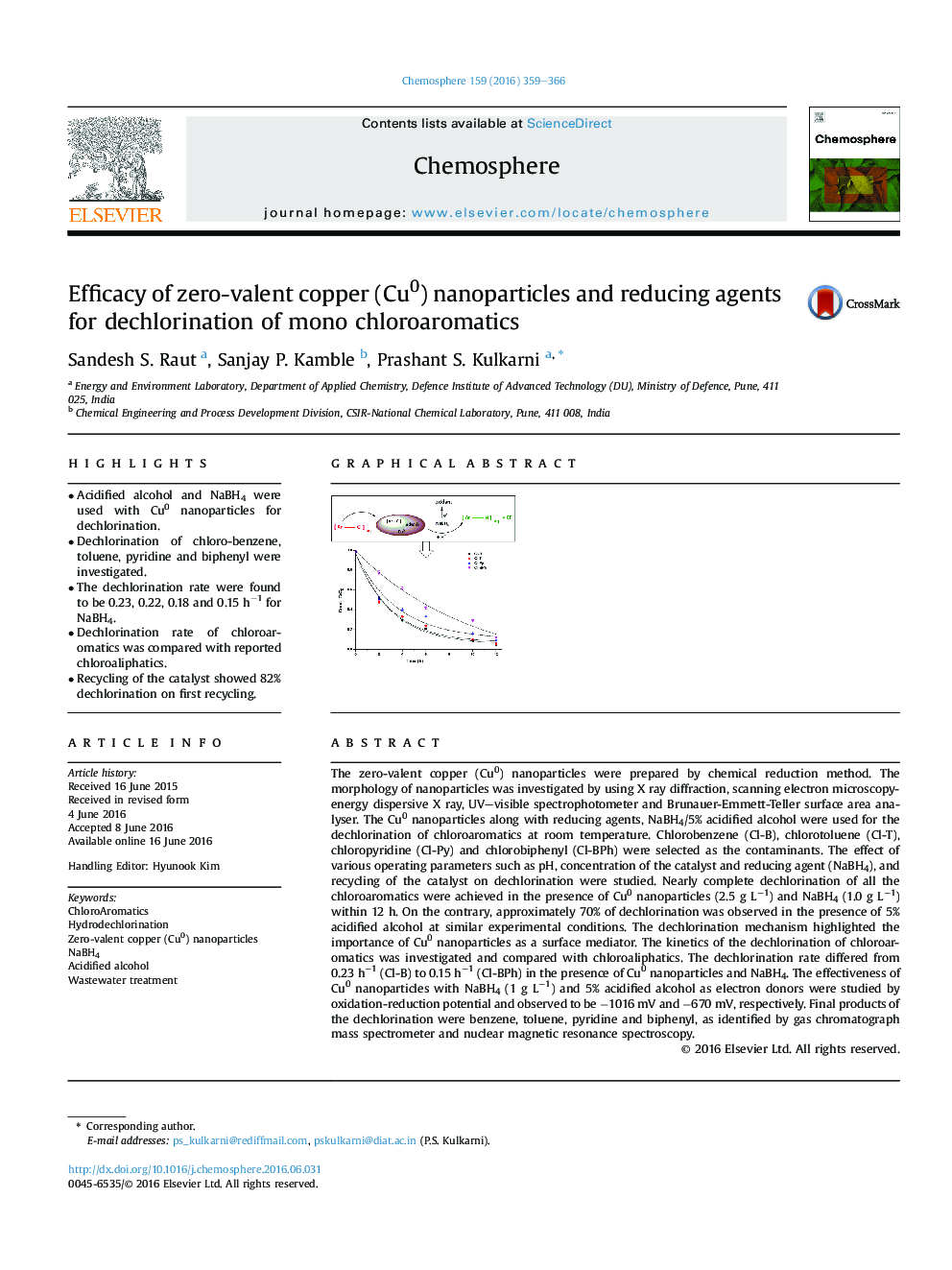| کد مقاله | کد نشریه | سال انتشار | مقاله انگلیسی | نسخه تمام متن |
|---|---|---|---|---|
| 4407471 | 1618812 | 2016 | 8 صفحه PDF | دانلود رایگان |

• Acidified alcohol and NaBH4 were used with Cu0 nanoparticles for dechlorination.
• Dechlorination of chloro-benzene, toluene, pyridine and biphenyl were investigated.
• The dechlorination rate were found to be 0.23, 0.22, 0.18 and 0.15 h−1 for NaBH4.
• Dechlorination rate of chloroaromatics was compared with reported chloroaliphatics.
• Recycling of the catalyst showed 82% dechlorination on first recycling.
The zero-valent copper (Cu0) nanoparticles were prepared by chemical reduction method. The morphology of nanoparticles was investigated by using X ray diffraction, scanning electron microscopy-energy dispersive X ray, UV–visible spectrophotometer and Brunauer-Emmett-Teller surface area analyser. The Cu0 nanoparticles along with reducing agents, NaBH4/5% acidified alcohol were used for the dechlorination of chloroaromatics at room temperature. Chlorobenzene (Cl-B), chlorotoluene (Cl-T), chloropyridine (Cl-Py) and chlorobiphenyl (Cl-BPh) were selected as the contaminants. The effect of various operating parameters such as pH, concentration of the catalyst and reducing agent (NaBH4), and recycling of the catalyst on dechlorination were studied. Nearly complete dechlorination of all the chloroaromatics were achieved in the presence of Cu0 nanoparticles (2.5 g L−1) and NaBH4 (1.0 g L−1) within 12 h. On the contrary, approximately 70% of dechlorination was observed in the presence of 5% acidified alcohol at similar experimental conditions. The dechlorination mechanism highlighted the importance of Cu0 nanoparticles as a surface mediator. The kinetics of the dechlorination of chloroaromatics was investigated and compared with chloroaliphatics. The dechlorination rate differed from 0.23 h−1 (Cl-B) to 0.15 h−1 (Cl-BPh) in the presence of Cu0 nanoparticles and NaBH4. The effectiveness of Cu0 nanoparticles with NaBH4 (1 g L−1) and 5% acidified alcohol as electron donors were studied by oxidation-reduction potential and observed to be −1016 mV and −670 mV, respectively. Final products of the dechlorination were benzene, toluene, pyridine and biphenyl, as identified by gas chromatograph mass spectrometer and nuclear magnetic resonance spectroscopy.
Figure optionsDownload as PowerPoint slide
Journal: Chemosphere - Volume 159, September 2016, Pages 359–366